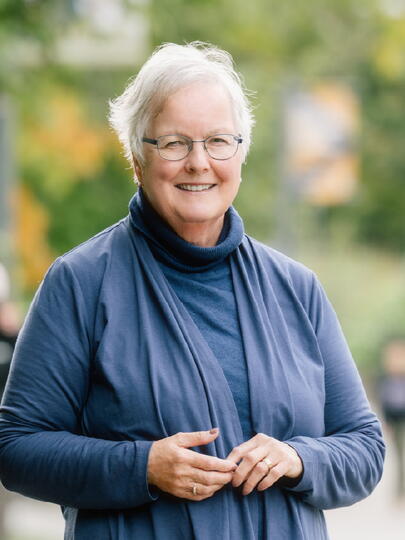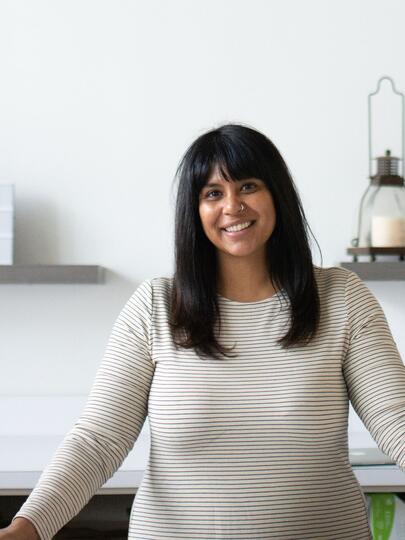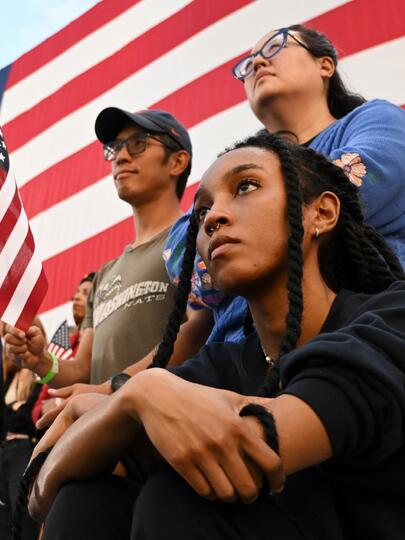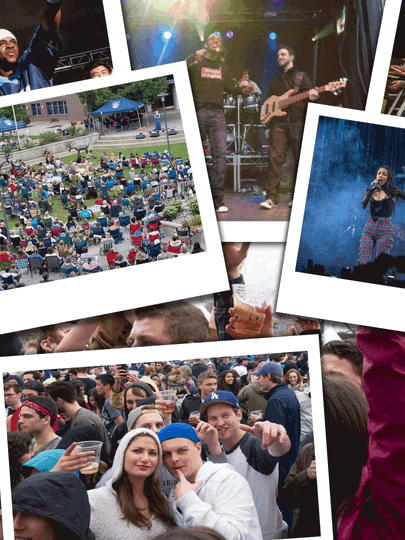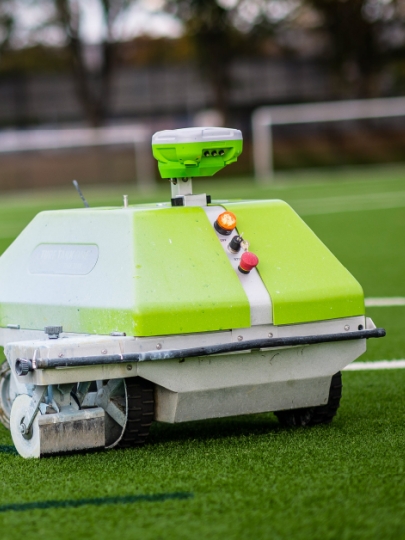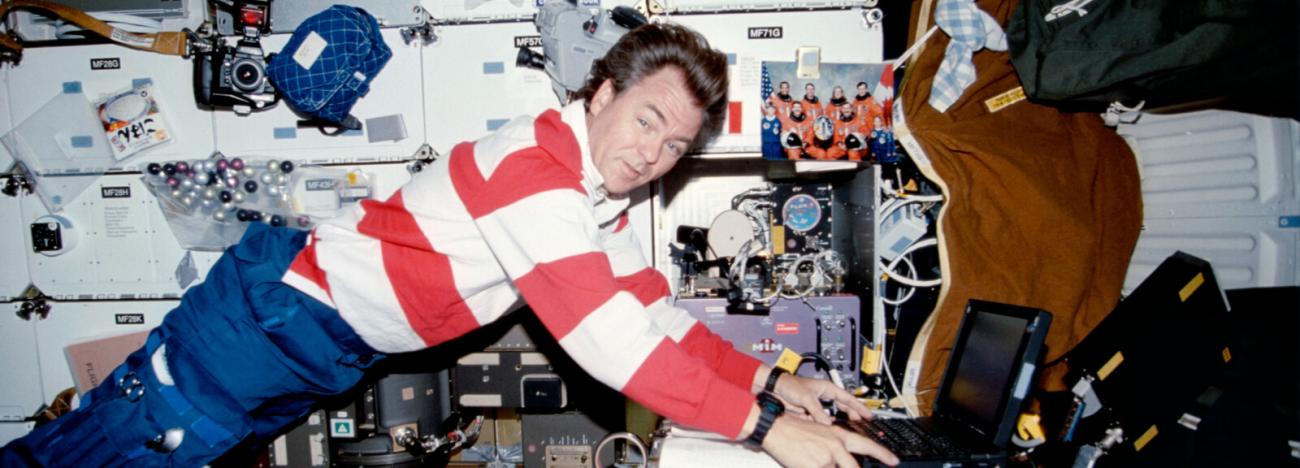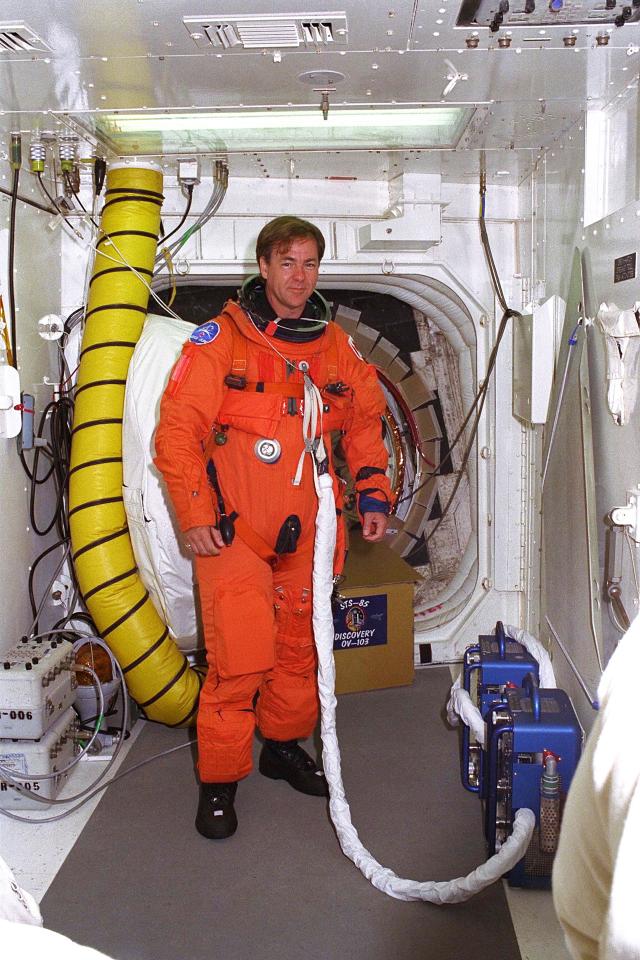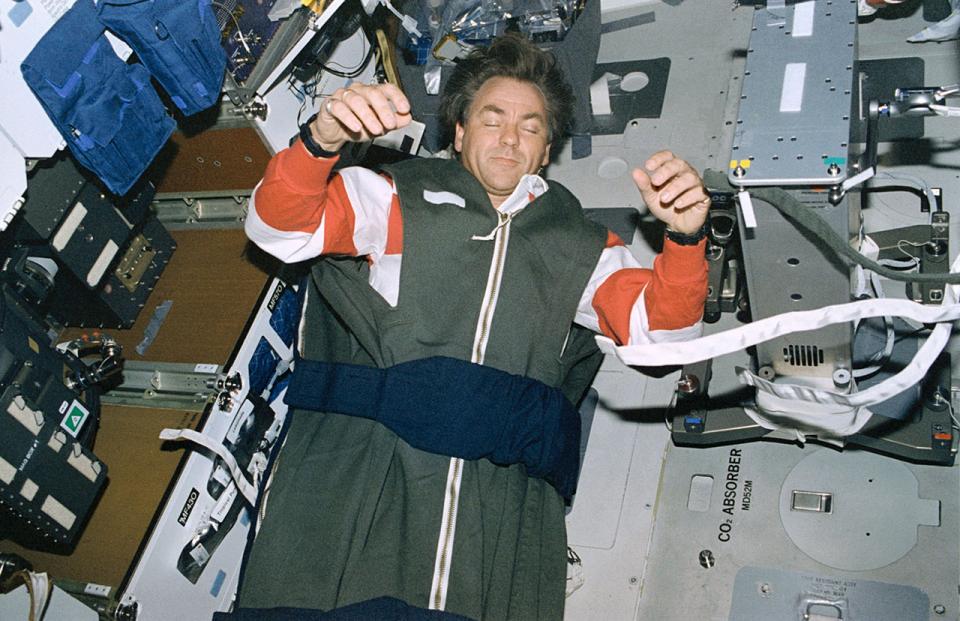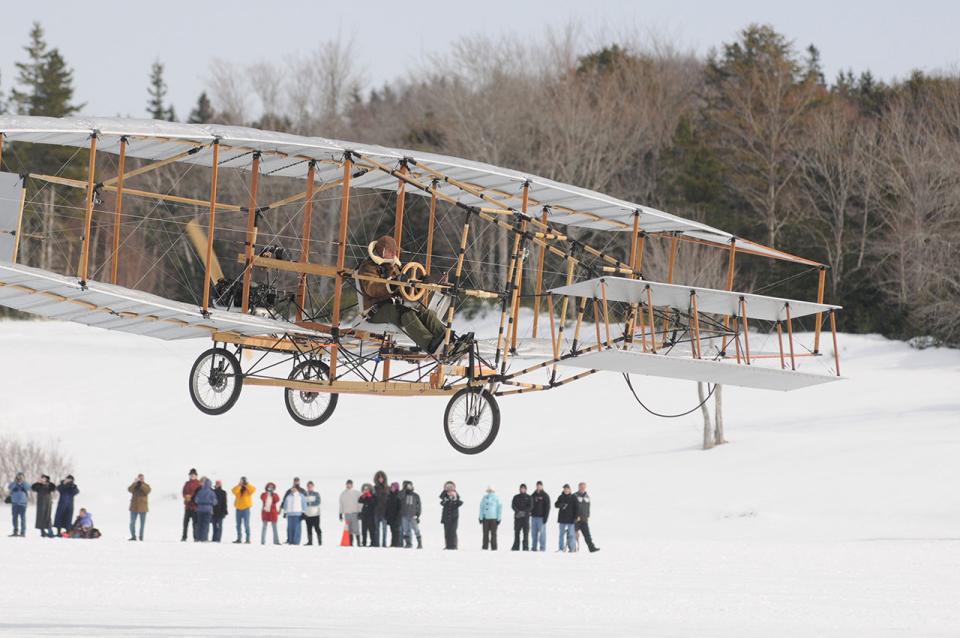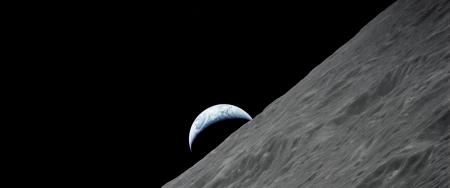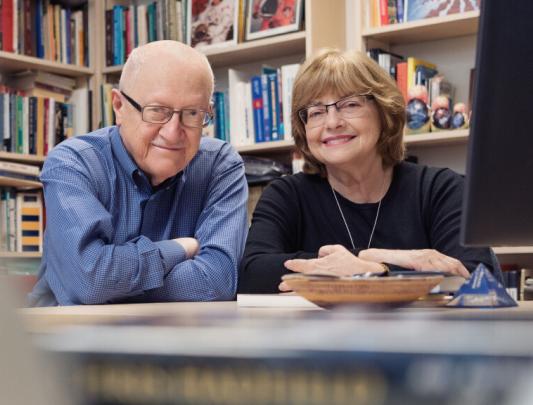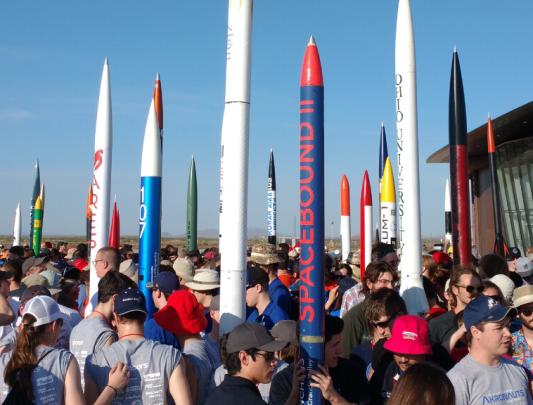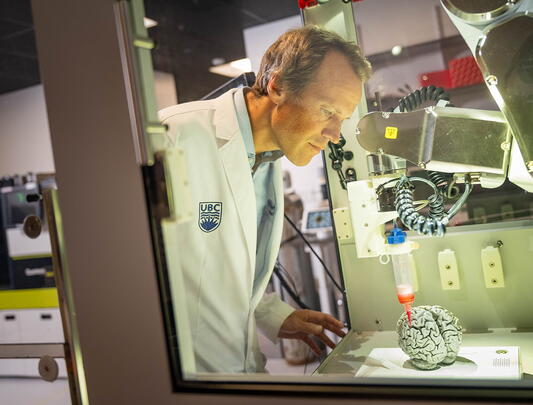Man on a Mission
Bjarni Tryggvason grew up with a desire to be an astronaut, but knew it was a faint hope. Like most young people in the 1960s, he followed the space race with interest and was stuck to the TV screen during the moon landing. However, he was resigned to the idea that becoming an astronaut was likely out of reach for a Canadian.
Always fascinated by flying, he started taking flying lessons right out of high school and got a commercial pilot’s license with the goal of eventually becoming an airline pilot. He enrolled at UBC as a backup plan. “You blow one pilot medical exam, and your airline career is done,” he says. But the discipline he chose to study – engineering physics – hooked him immediately. “I ran into some really interesting stuff on the science side, decided not to become an airline pilot, and stuck with research and development.”
It turned out to be a good plan. After UBC he did post‑grad work at Western University in mathematics and fluid dynamics, which led by 1982 to a research position at the Low Speed Aerodynamics Lab at the National Research Council in Ottawa (“low speed” being anything under 480 mph). He was lead researcher investigating the wind loads for the Royal Commission on the sinking of the Ocean Ranger oil rig in 1982. As well as this work, he taught graduate courses in structural dynamics and random vibrations at Carlton and the University of Ottawa, accumulated thousands of hours as a pilot, and was a self-described fitness nut.
Even so, his focus was still primarily on research and development. But when the ads came out in 1983 to join Canada’s newly created space program, he jumped at the chance. After an extensive vetting program, he was accepted as one of the first group of Canadian astronauts.
“I was already doing all the right stuff,” he says, “so it wasn’t a big career change for me. I was already into flying and research and fitness, I was a flying instructor and had experience in many kinds of aircraft. It was a natural fit for me.”
Tryggvason supported Marc Garneau during his 1984 space shuttle flight, developing procedures for onboard experiments, and was on track for subsequent missions. But in 1986, the Challenger shuttle blew up during launch, delaying the next flights for Canadian astronauts by five years. During that time he began working on systems to isolate space experiments from the vibrations caused by the everyday workings of the spacecraft. He was the lead developer of the Large Motion Isolation Mount and the Microgravity Vibration Isolation Mount (MIM). At the same time, he trained as a backup astronaut for the 1992 space shuttle flight.
And then, in August 1997, came the chance to go to space. His job as on-board payload specialist was to conduct tests on the second generation MIM device and perform experiments that would highlight the effects of spacecraft vibrations on fluid experiments. The innovations he developed have been used on aircraft, the Russian space station, the space shuttle and on the International Space Station.
“You sit in the capsule for an hour and a half before launch. I noticed how everyone was so calm. We all had specific things to do and we did them. They weren’t paying us to be afraid.”
“You sit in the capsule for an hour and a half before launch. I noticed how everyone was so calm. We all had specific things to do and we did them. They weren’t paying us to be afraid.”
But does the job change just because you happen to be hurtling around the planet at unimaginable speeds? Does your mind wander off to dwell on the horrific possibilities of fiery death, or do you gaze, mind blown in religious rapture, at the sight of the Earth floating by? Not really, says Tryggvason. Your time is spent concentrating on your assignments. “You sit in the capsule for an hour and a half before launch,” he says. “I noticed how everyone was so calm. We all had specific things to do and we did them. They weren’t paying us to be afraid. Sure, you think about all the things that can go wrong, but when you start going through all the prep steps, you go into that mode you’ve trained for and you do your job. Anyway, if you focus on your fear you’ll be petrified during the whole mission, as you’re only a second away from dying at any time – a million things can go wrong. So fear doesn’t really play a part.”
And as far as the rapture portrayed in various movies is concerned, he knows of hardly any astronauts who have had their minds blown during a mission. “Of course, the view is like nothing else,” he says, “and I felt the awe of being so fortunate as to be the one who gets to do this. But mind‑blowing? No. We’re too busy doing our jobs.”
He’s often asked if being in the tiny shuttle caused any claustrophobia. “The shuttle looks cramped,” he says. “It’s as big as a good-sized bathroom, but you can use the whole volume, up down and sideways. And you’re in free fall, so you can manoeuvre easily.”
Which brings Tryggvason to a point of clarification. “People say there’s no gravity up there, but that’s just nonsense. If there was no gravity, you couldn’t stay in orbit. You’d fly off into space. The gravitational acceleration to the Earth on the space station is 9 metres per second squared, compared to 9.8 on the ground. The Earth’s gravitational field is almost as strong at that altitude as it is on the ground. A lot of people don’t understand that. Imagine if you jump off the roof of a two storey building. For that few seconds you’re in free fall. All your muscles are stress-free, all the pressure gradients of fluids have disappeared. That’s what’s going on in the free fall environment.” It’s the speed of the orbit that accounts for the weightless sensation of the free fall state, not a lack of gravity. The orbital speed of the spacecraft, 7.8 km per second, produces a 90 minute orbit around the Earth.
“[When sleeping], your brain tells you to roll over onto your side or back or whatever. Since you’re in free fall, it doesn’t matter, but your brain tells you to do it anyway. It’s an interesting experience.”
But how does one sleep when hurtling around the world in a free-fall state? “You sleep in sort of a sleeping bag. But since you’re in free fall, you have to strap your pillow to your head, otherwise it would float away. You don’t actually need a pillow, but you use it because you’re used to having one. After a couple of nights I stopped using it because it just didn’t make sense. Also, your brain tells you to roll over onto your side or back or whatever. Since you’re in free fall, it doesn’t matter, but your brain tells you to do it anyway. It’s an interesting experience."
And life after orbiting? Tryggvason and his son, an airline pilot, both fly competitive aerobatics as well as performing in air shows. For years after retiring from the Canadian Space Agency, he worked at the International Test Pilots school in London, Ontario, training pilots to become test pilots, and he still works as a test pilot himself. His expertise makes him a sought-after pilot for experimental and vintage aircraft. In 2009 he flew a replica of Alexander Graham Bell’s Silver Dart to mark the centennial of the first flight in Canada and the British Empire. He has more than 6,500 hours as a pilot, and has flown more than 50 aircraft types. He is also currently working with a US-based group developing STEM experiments that are conducted on the International Space Station.
He completed the updated mission specialist training between 1998 and 2000, and was scheduled to go on another mission. But he felt his kids, both in high school in Florida at the time (his daughter is now a veterinarian), needed his attention to help them start on their careers and to reacquaint them with Canada. So he left Houston in 2001, figuring he’d spend a couple of years with family business, then return, but he never did.
But would he go up again given the opportunity? “Absolutely,” he says. “In a flash.”
